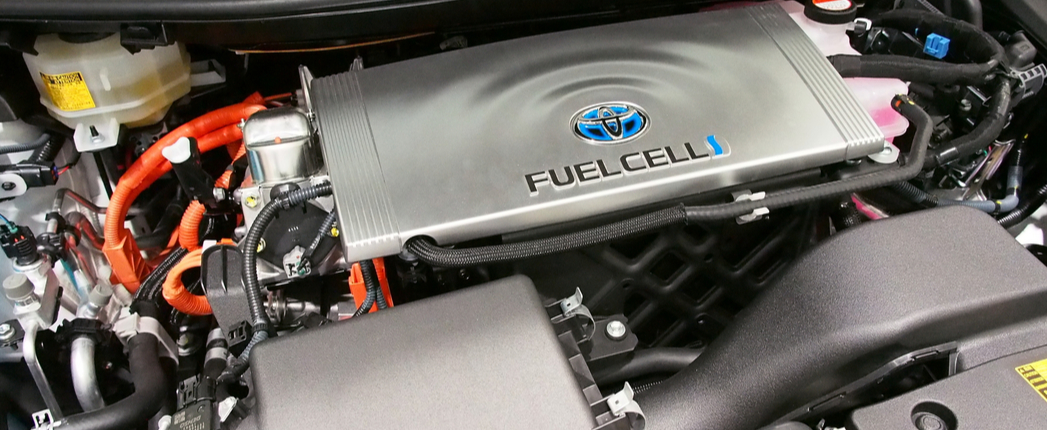
Battery-powered cars are now synonymous in the public consciousness with zero-emissions transport. The auto industry is sinking billions of dollars into expanding the number of models on the market, extending range and reducing charging times. BEVs are reaching price parity with their internal combustion engine counterparts and are selling in ever-greater numbers, even in the depths of the pandemic.
There is another way of powering a car without waiting hours for a recharge or producing an ICE vehicle’s emissions – a hydrogen fuel cell. Hydrogen is the most abundant element in the universe, and there is plenty of it on Earth, too, albeit scarcely in its gaseous state. It readily combines with other elements, such as carbon to form oil and natural gas and with oxygen to form water.
It is unlikely, though, that hydrogen-powered cars will be the one-size-fits-all e-mobility solution that EVs are touted to be, says one e-mobility lubrication researcher.
“Fuel cells are one of three major routes towards carbon neutrality in transportation. The other two are batteries and e-fuels,” Boris Zhmud, head of research and development at Berlin-based lube maker Bizol, told Electric Vehicles InSite. “Technology neutrality should be viewed as a key to a successful and politically unbiased decarbonization strategy. All three technologies would require enormous upfront investments.”
There are a number of ways to produce enough hydrogen to power a large fleet of fuel-cell electric vehicles. One is to split water into hydrogen and oxygen using electricity.
Fuel-cell vehicles face several obstacles to gaining a larger foothold in the passenger car market. Unlike BEVs, FCEVs have yet to establish their green crendentials. Generating hydrogen can be carbon intensive. Almost all hydrogen in the United States, some 95%, is from natural gas, known as “blue hydrogen.”
For vehicle hydrogen to be carbon free, or “green hydrogen,” it must be produced by a process such as electrolysis using renewable electricity. Compressing it for transport and use is also energy-intensive, again using renewable energy.
At the moment, fueling infrastructure tends to be concentrated in urban areas, making FCEVs less attractive to people in rural areas. The transport cost per unit of energy for hydrogen is greater than gasoline.
Another significant disadvantage is that there are relatively few models on offer, and what ones there are can be much more expensive
These include Toyota Mirai, Hyundai Nexo and the Honda Clarity Fuel Cell, as well as a smattering of other models made by GM, BMW, Renault, Daimler, Hydrogenics, Mazda, Kia and Tata.
The 2021 Mirai gets an estimated 402 miles of range, with the Nexo close behind at 380 miles. But according to Zhmud, hydrogen fuel cells are less efficient compared with BEVs, and he calculates that based on the tank-to-wheels efficiency – a measure energy demand during the use phase – fuel cells are just over half as efficient as a battery.
“What does it mean? For instance, you will need [almost] twice more wind turbines to generate enough energy to power a fuel cell-based fleet compared to a BEV-based fleet of the same size. This implies that fuel/energy cost per mile will be lowest for BEVs,” Zhmud said.
FCEVs have some clear advantages over BEVs. Chiefly, the speed of refuelling the hydrogen tank compared with charging a battery is faster. Drivers can refuel FCEVs in less than five minutes in any location where there is a hydrogen refuelling point. For BEV drivers, even the fastest recharging speeds are many times that, are only available in certain locations and are not recommended for every charge cycle.
FCEVs are also lighter than BEVs, and less vehicle mass results in higher power density. This makes FCEVs ideal for medium- and heavy-duty applications.
Having far smaller battery packs also reduces the need for critical raw materials such as cobalt and nickel, which are mined in countries where conflict erupts for control of these resources.
Finally, like their BEV cousins, FCEVs produce no carbon emissions. In the fuel cell, electrons separated from hydrogen atoms by a catalyst create an electric current as they naturally equalize charge. The byproducts are water and heat.
An unprecedented number of hydrogen production and distribution projects are underway. Last year, six European countries and the European Commission launched hydrogen strategies amid the Covid-19 crisis, often as part of a green recovery plan, according to U.K. consultancy IHS Markit. About half of global planned hydrogen electrolysis capacity is in Europe.
A consortium formed by Gascade, Gasuine, RWE and Shell will develop a Europe-wide hydrogen production and transportation project. Polish refiner and lube maker Orlen Oil announced plans for a regional hydrogen production and distribution network across Poland, Czechia and Slovakia. And a Greek-American group proposed a hydrogen infrastructure development that could help phase out some of Greece’s coal-fired power stations.
The Chines government is encouraging FCEV development, and in late 2020 announced a subsidy to manufacturers of core fuel technology as a way to stave off foreign competition for BEVs. This could stimulate further development elsewhere in the world.
The cost of hydrogen electrolysis is also reaching parity with methane reforming, according to the U.S. Office of Energy Efficiency and Renewable Energy.

Sorry, a technical error occurred and we were unable to log you into your account. We have emailed the problem to our team, and they are looking into the matter. You can reach us at cs@lubesngreases.com.
Click here link to homepage